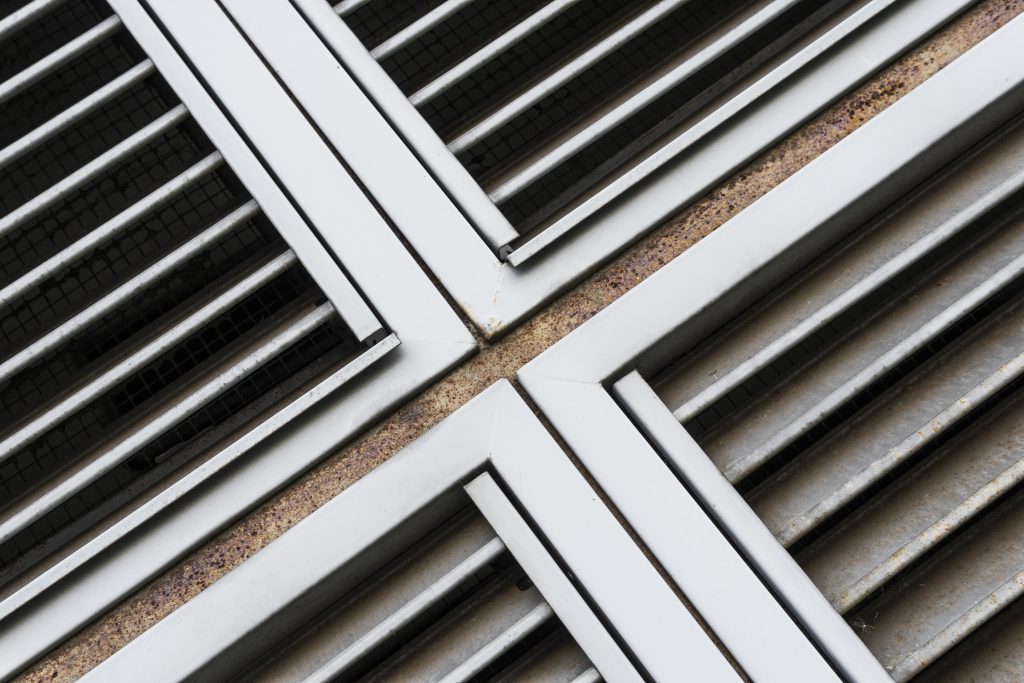What is Industrial HVAC?
Industrial HVAC is the process of providing clean, cool air and removing hot, dirty air from large buildings. Buildings such as paper plants, steel mills, warehouses, and factories can all benefit from industrial ventilation. Unlike commercial systems, industrial ventilation is specifically designed to address the unique challenges and requirements of large-scale facilities.
The primary goal of industrial HVAC is to maintain a safe and comfortable working environment for employees by controlling temperature and humidity. Read on to learn more.
Differences Between Commercial & Industrial HVAC

One of the key differences between industrial ventilation and commercial ventilation is the goal of the system itself. Commercial ventilation systems, on the other hand, are solely focused on providing comfort for the people inside. Air conditioning is used to maintain a steady, comfortable temperature throughout the year.
For the most part this just isn’t possible in a large industrial building with heavy equipment, lots of doors and windows, and a large number of people coming and going. Industrial buildings rarely achieve the total temperature control that one could find in a commercial environment. Instead, an industrial building uses solutions like natural ventilators to exhaust excess hot air. They may not make the building ever feel “cool”, but they help ameliorate the very high temperatures that can be dangerous. Furthermore, maintaining temperatures and conditions that are safe for the equipment, especially in very high heat situations, is also a concern for industrial ventilation.
Importance of Proper Ventilation in Industrial Buildings

Industrial ventilation often needs to account for high heat loads generated by heavy machinery. Equipment like forklifts, presses, and especially forges give off a lot of heat. Proper ventilation is crucial for to controlling the temperature and humidity levels in these facilities. Without adequate ventilation, workers are exposed to extreme heat conditions, leading to discomfort, fatigue, and even health risks.
Secondly, proper ventilation helps to remove airborne contaminants like dust, fumes, and gases. These pollutants can be harmful to workers’ respiratory health and may cause various respiratory diseases if not properly controlled. Even facilities with effective source capture equipment may have residual issues with these contaminants.
Finally, efficient ventilation systems contribute to energy savings by optimizing the use of heating, ventilation, and air conditioning (HVAC) equipment. They prevent the need for excessive cooling or heating, reducing energy consumption and associated costs. A solution, designed for a specific building, can make a huge difference when it comes to system efficiency.
Overall, proper air-movement systems are essential for creating a safe, healthy, and productive work environment for employees.
The Three Main Methods from Moffitt
Industrial ventilation utilizes various methods to ensure effective airflow and temperature control within the building. Some common methods include:
- Natural ventilation: The use of windows, vents, and openings to allow fresh air to enter the building and facilitate the natural movement of air. Moffitt is the expert when it comes to natural ventilation. With large ventilators like the MatrixVent to smaller ones like the Model RR turbine vent, there is a vent for every type of building.
- Mechanical ventilation: The use of mechanical equipment such as fans and blowers, to create airflow and control air distribution within the building. Mechanical ventilation systems can be designed to provide targeted cooling in specific areas or to maintain uniform air circulation throughout the entire facility. Roof fans, wall fans, upblast fans, and air circulators are just some of the options when it comes to mechanical ventilation.
- Evaporative cooling: In hot and dry climates, evaporative cooling is often employed to reduce the temperature of incoming air. This method utilizes the evaporation of water to cool and humidify the air, providing relief from high temperatures. This can have an enormous impact in industrial facilities, lowering temperatures below outdoor ambient conditions.
By combining these methods and customizing the system according to the specific needs of the building, effective temperature relief and air quality control can be achieved. Moffitt has been helping facilities do this for over sixty years. Contact us today to see how we can make industrial HVAC work for you.
